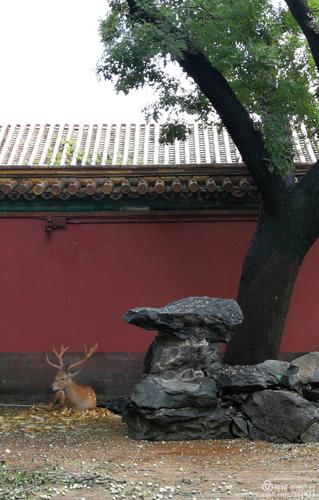
The History of the Platform of Calling Deer in the Imperial Garden
A Majestic Stage: Introduction to the Platform of Calling Deer
The Platform of Calling Deer (鹿台, Lùtái), located within the magnificent Imperial Garden in Beijing, stands as a testament to centuries of Chinese history. More than just a physical structure, it embodies the grandeur of imperial life, whispering tales of emperors past and their intricate relationship with nature, power, and leisure. This article delves into the captivating history of the Platform of Calling Deer, exploring its construction, purpose, and significance throughout the ages.
From Humble Beginnings: Construction and Early Years
The Platform of Calling Deer was first constructed during the reign of the Yongle Emperor (永乐帝, Yǒnglè Dì), the third emperor of the Ming Dynasty (明朝, Míngcháo), who reigned from 1402 to 1424. Constructed from white marble and featuring exquisite craftsmanship, the platform stood as a symbol of the emperor's power and the dynasty's burgeoning wealth.
During its early years, the platform served as a stage for various imperial activities. The emperor, positioned high above on the platform, would enjoy panoramic views of the meticulously landscaped Imperial Garden, complete with lush greenery, serene ponds, and winding pathways.
A Hunter's Paradise: The Name and its Significance
The name "Platform of Calling Deer" hints at one of its primary functions: a vantage point for hunting expeditions within the Imperial Garden. Deer, a symbol of good fortune and prosperity in Chinese culture, were released into the garden. The emperor, along with chosen members of the court, would ascend the platform, the elevated position offering a strategic advantage during hunts.
However, it's crucial to note that the act of hunting held a deeper symbolic meaning. It wasn't merely about the thrill of the chase or acquiring food. Instead, it served as a display of the emperor's martial prowess and his ability to maintain order and control, reflecting the Confucian ideal of a just and capable ruler.
Beyond the Hunt: A Multifaceted Platform
While hunting played a significant role, the Platform of Calling Deer wasn't solely dedicated to this activity. Over the centuries, it served as a versatile venue for a variety of imperial events:
- Military Parades: The platform offered an unparalleled vantage point from which the emperor could review his troops, showcasing the might of the imperial army.
- Festive Celebrations: Grand celebrations, marked by vibrant performances, music, and dance, often took place on the platform, entertaining the imperial court and distinguished guests.
- Diplomatic Gatherings: The impressive backdrop of the platform provided a majestic setting for receiving foreign dignitaries and conducting diplomatic proceedings.
A Legacy Etched in Stone: The Platform's Enduring Significance
The Platform of Calling Deer, despite the passage of time and the changing fortunes of dynasties, continues to stand as a silent witness to history. Having survived the fall of the Ming Dynasty and the subsequent reign of the Qing Dynasty (清朝, Qīngcháo), it serves as a tangible link to China's imperial past.
Today, as part of the meticulously preserved Imperial Garden, the Platform of Calling Deer attracts visitors from across the globe. They come not only to marvel at its architectural splendor but also to reflect upon the historical events it witnessed and the emperors who once graced its platform. It serves as a poignant reminder of the grandeur, complexities, and enduring legacy of China's imperial history.
Questions for Further Exploration:
- What architectural styles and influences are evident in the design of the Platform of Calling Deer?
- How did the use of the Platform of Calling Deer evolve during the Qing Dynasty compared to its role in the Ming Dynasty?
- Beyond its historical significance, what does the Platform of Calling Deer symbolize in contemporary Chinese culture?